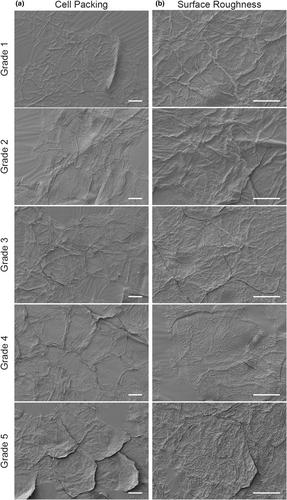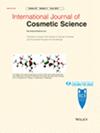Subvisible microscale texture is present on the crista cutis of the skin and interacts with incident light to create a soft and radiant ‘shitsukan’ appearance
Abstract
Objective
Previous studies have reported the existence of various topographic structures on the skin surface at different scales: visible and subvisible structures. Surface topography regulates the light reflection profile, and the relationship between light diffusion and human perception, such as soft appearance, has been well studied in the manufacturing industry. However, our understanding of how skin surface topography controls the optical properties of the skin surface and the appearance remains limited.
Methods
Two human studies were conducted involving healthy East Asian females. The topography of their skin was evaluated by measuring roughness parameters on skin replicas and roughness attributes on stripped corneocyte samples. These topographical attributes at different scales were compared with their perceived skin appearance, characterized by softness and radiance. Additionally, a novel image analysis algorithm to measure Crista cutis surface reflection (CSR) was developed to assess light reflection on their skin surface. The correlations of light reflection on the skin surface with these skin topographic parameters were also analysed.
Results
Through skin replica observations, attributes of subvisible microscale texture on the surface of the crista cutis were defined. This texture showed significant correlations with light diffusion on the skin surface measured as CSR, and this CSR strongly correlated with soft skin appearance and radiant skin appearance. However, neither macro-topography nor surface roughness on corneocytes showed a clear correlation with these skin attributes.
Conclusion
Subvisible microscale texture on the skin's surface is not visible to the naked eye. However, this structure plays a crucial role in regulating the optical properties of the skin's surface, which in turn leads to tangible differences in skin appearance.


 求助内容:
求助内容: 应助结果提醒方式:
应助结果提醒方式:


